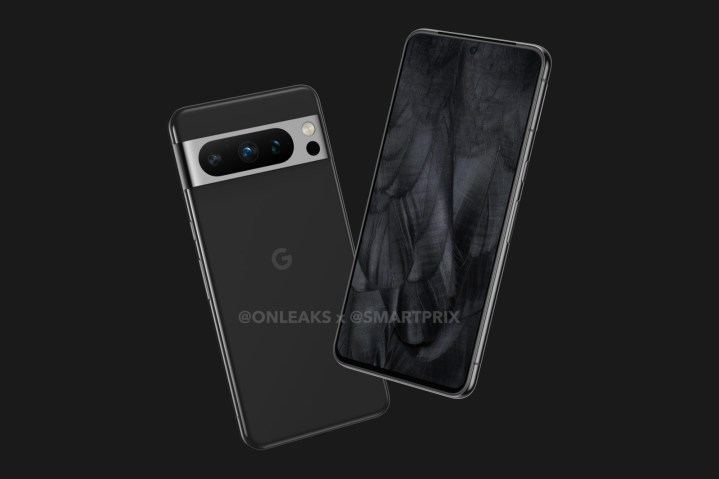
The Google Pixel 8 and Pixel 8 Pro are on their way. Google’s fallen into a pretty reliable release pattern for Pixel phones, meaning we can safely expect a new lineup of flagship Pixels each year. In 2023, that means the Pixel 8 and 8 Pro.
The Google Pixel 7 and Pixel 7 Pro are two excellent devices — possibly two of the best smartphones Google has ever made. But while they have some serious strengths, a number of problems and missed opportunities drag both phones down. This wouldn’t be a problem if the competition was standing still, but it’s not. The Apple iPhone 14 Pro refreshed the iPhone design for the first time in years, and the recently released Samsung Galaxy S23 Ultra is quite possibly one of the best smartphones ever created. So what’s a humble Pixel to do?
Here’s a roundup of the latest Pixel 8 rumors we’ve heard so far, plus a wish list of a few things we’re hoping to see.
Google Pixel 8 and Pixel 8 Pro: design
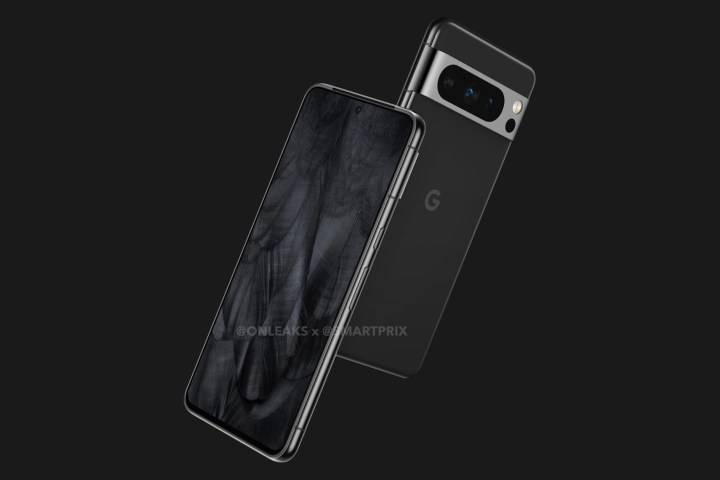
So far, leaks have suggested Google won’t be making any drastic changes to the Pixel 8 line. The overall design is going to remain largely the same as that of the Pixel 7 Pro, with Google favoring rounded edges again. There will also be an increased rounding of the corner profile — but with a slight increase in width. Case designers are confirming this approach, with leaked images of cases echoing the earlier design leaks. However, it’s worth keeping in mind that many case manufacturers create renders around the most likely leaks, and may not have a direct source within Google.
As is tradition for the Pixel line, we should also expect a dual-tone approach with glass on both sides, as well as a metal frame that extends to the camera bar strip on the back of the device. But there does appear to be a change with the camera bar, as least with how the lenses are housed. Instead of the dual cutout design that you’ll currently find on the Pixel 7 Pro, the Pixel 8 Pro seems to only have a single, elongated pill-shaped cutout that will house all three camera sensors.
Like most phones these days, the camera bar should have a high-resolution main camera, an ultrawide camera, and a periscope-style telephoto lens. The leak also shows another round cutout underneath the LED flash, and a leaked video has revealed this to be a temperature sensor. The video shows a model removing their glasses and moving the sensor close to their face to take a reading. If legitimate, it’s an odd inclusion, and we’re not sure why such a niche sensor would be worthwhile on a mainstream flagship phone. This seems to be a Pixel 8 Pro-only feature, too, as the sensor doesn’t appear on the leaked renders of the Pixel 8.
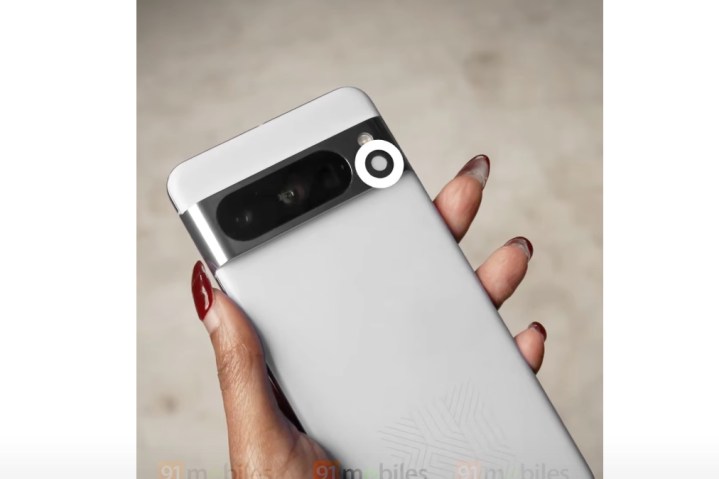
Rumors confirm that the Pixel 8 Pro will have an FIR thermometer sensor. While there was some speculating that this could be used for thermal photography, this is not the case at all. Instead, the sensor, which is a Melexis MLX90632, is just used for high-precision, non-contact temperature measurements. This includes body temperature.
Other than that, not much else has changed, especially in terms of the thickness of the bezels. The selfie camera is also in the same position as it is on the Pixel 7 Pro. The screen of the Pixel 8 Pro looks flat, rather than having the curved sides of its predecessor.
The display appears to measure 6.52 inches, and it could be an OLED display panel with at least a 90Hz refresh rate. The dimensions of the phone itself seem to come in at 162.6mm by 76.5mm by 8.7mm.

We got another look at the Pixel 8 Pro in early July, this time with the phone appearing in hands-on images. In a (now-deleted) Reddit post, the two photos showcased the front and back of the Pixel 8 Pro.
The photos confirm what we see in the renders above, including the redesigned camera housing and the temperature sensor. We also get a better look at the more rounded corners, the phone’s flat display edges, and what appears to be a frosted-glass finish on the back.
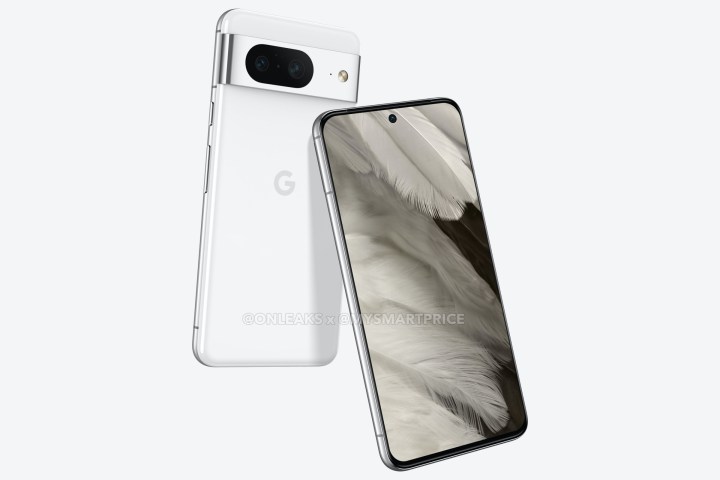
Leaks for the regular Pixel 8 show a more rounded phone with a metallic frame and a horizontal camera bar on the back, as well as dual camera sensors in a single pill-shaped cutout. The earpiece grille at the top is more prominent than the Pixel 7 and Pixel 7 Pro, which signals a small design change.
The Pixel 8 could also have a smaller form factor than its predecessor, which should appeal to small phone enthusiasts. The dimensions of the Pixel 8 appear to be 150.5mm x 70.8mm x 8.9mm, which is smaller than the Pixel 7’s size at 155.6mm x 73.2mm x 8.7mm. This means the height has been reduced by about 5mm, and it’s 2.4mm narrower too. If the smaller size is true, then it should have a more comfortable in-hand feel.
However, a new leak from Twitter user @heyitsyogesh gives us a better look at the size of the Google Pixel 8 Pro display. According to his tweet, the display will be a 6.7-inch QHD+ LTPO OLED panel with a 120Hz refresh rate. This is slightly larger than the previously mentioned 6.52-inch size, which could actually be for the regular Pixel 8 since this was also mentioned with a 90Hz refresh rate.
Google Pixel 8 and Pixel 8 Pro: specs

We have a fairly solid idea of what the Pixel 8 and Pixel 8 Pro will look like — but what kind of specs will they be touting? We have a few ideas.
It should be a no-brainer at this point to expect the next iteration of Google’s Tensor chip, which is probably going to be called the Tensor G3. It’s reported that this chip will be made using the 3nm process, which should mean significant upgrades for both raw performance and power efficiency.
One of the problems that arose with the Pixel 7 lineup was power efficiency, as many people reported issues with not-so-great battery life, plus heat buildup when dealing with more power-intensive apps and games. Hopefully, the next generation Tensor chip can fix those issues on the Pixel 8 series.
What about the display? WinFuture spotted two Google device codenames last November — including Husky and Shiba. Husky is expected to be the Pixel 8 Pro and is said to feature a 2822 x 1344 display resolution. Shiba, the regular Pixel 8, will have a slightly lower-res display at 2268 x 1080. Both phones should have OLED panels.
WinFuture’s sleuthing also revealed that both the Pixel 8 and Pixel 8 Pro should come with 12GB of RAM — a nice upgrade from the base 8GB of RAM offered on the Pixel 7 series. The latest tweet from @heyitsyogesh confirms the 12GB upgrade.

A report in June 2023 confirms that the Pixel 8 will be getting the Tensor G3 chips, and it’s going to have some big upgrades. The Tensor G3 chip will have more modern cores, support for the latest storage standard, and more. The Tensor G2 had a 2+2+4 layout, but the G3 will have a 1+4+4 layout instead. The single big core will be Cortex-X3 with 3.0GHz. Then there will be Cortex-A715, with four of those mid-cores coming in at 2.45GHz. Numbers aside, this means the Pixel 8 will have a big boost in the overall CPU performance, as well as power efficiency.
There will also be ARMv9 for security upgrades. as it will implement Memory Tagging Extensions (MTE) that will prevent memory-based attacks. It would also remove 32-bit support entirely, as Google already started stepping away from that with the Pixel 7. And finally, the G3 will help the Pixel 8 support faster and more efficient UFS 4.0 storage, which brings it up to par with the Samsung Galaxy S23 Ultra and OnePlus 11. Storage options would include 128GB or 256GB storage.
The Pixel 8 will also have a GPU upgrade, as the G3 picks up Arm’s Immortalis GPU. Though it’s not the latest, it’s a 10-core GPU that will have plenty of upgrades from the previous iteration, including ray-tracing support.
According to Twitter user @heyitsyogesh, the Pixel 8 Pro could come with the Tensor G3 + Titan chip. This means we could see a new version of the Titan chip as well, which is used for security. The Pixel 8 Pro would also have a new ultrasonic fingerprint sensor. And the Pixel 8 and Pixel 8 Pro will likely ship with Android 14.
Google Pixel 8 and Pixel 8 Pro: cameras
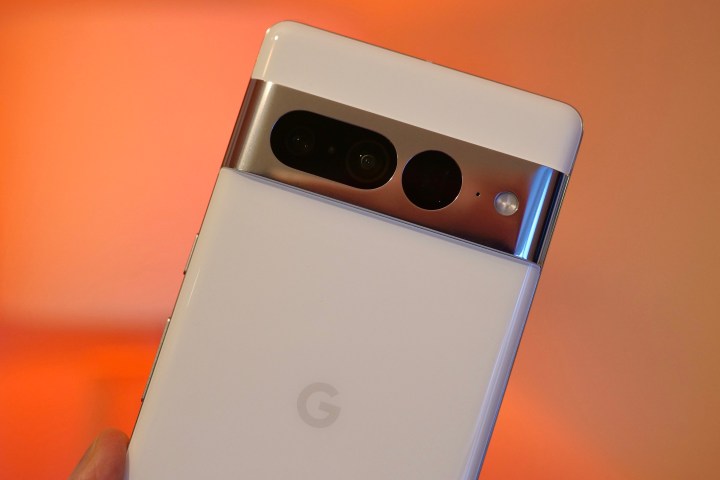
Google’s Pixel phones always deliver the goods on the camera front, and the Pixel 8 lineup could be shaking things up in a big way.
In December, leaker @Za_Raczke on Twitter claimed that the Pixel 8 and Pixel 8 Pro will use staggered HDR technology for better image quality. But here’s the thing: the Isocell GN1 sensor on the Pixel 7/7 Pro doesn’t support staggered HDR. But you know what does? The newer Isocell GN2 sensor. As such, if this leak is correct, the Pixel 8 and Pixel 8 Pro should both get new sensor hardware for the main camera.
A more recent rumor seems to confirm that the Google Pixel 8 is indeed getting the new Samsung ISOCELL GN2 sensor. With this upgraded hardware, we’ll have a larger sensor that can capture about 35% more light than the ISOCELL GN1, resulting in brighter low-light photos and faster shutter speeds that mean reduced blur in images.

The new sensor is also capable of 8K/30fps video capture, with help from the next-gen Tensor G3 chip. But it is unclear whether we will actually see that or not in the Pixel 8, as it’s not supported by GCam on the Pixel 8 as of this moment. But it’s very likely to see staggered HDR, which reduces delay time between frames that are captured for HDR images, helping to reduce the ghosting and speed up the overall capture process once that button is pressed.
Rumors also suggest upgrades to the ultrawide camera, going from the 12MP that has been on the past few iterations all the way up to a 64MP Sony IMX787 ultrawide lens. The IMX787 is the same sensor that is currently used on the Pixel 7a main camera. With this large jump from 12MP to 64MP, it’s a big upgrade and about twice the size of the previous lens. It’s also suggested to be wider, so the field of view may go from 0.56x zoom to 0.49x. Macro mode, originally introduced on the Pixel 7 series, may be missing, however.
With large upgrades for the ultrawide, you may also think the main camera is getting big upgrades. Well, no. Instead, the main camera may just be getting more modest upgrades in hardware, at least on the standard Pixel 8. The main lens may be slightly wider with a 0.55x rather than 0.67x zoom as on the Pixel 7. The Pixel 8 Pro will have the same 5x telephoto module as the Pixel 7 Pro and the 11MP selfie camera remains unchanged from the Pixel 7 lineup.

The Pixel 8 Pro could also be getting a new 8×8 time-of-flight (ToF) VL53L8 sensor, which is an upgrade over the single-point ToF sensor from the previous generation. This improves autofocus and makes it more reliable.
This could be the starting point of Google making the standard Pixel more different from the Pro variants. With the Pixel 8 lineup, the standard model could mean getting weaker zoom and a lower-end ultrawide experience.
On the camera software front, there are some cool feature enhancements coming. Adaptive torch is a new feature that we haven’t seen before, but it will dynamically adjust flash intensity based on the scene and other inputs, like the capture mode. This feature should help to reduce overexposed shots and even improve low-light scenes where you use the flash. The other newly reported feature is segmentation AWB, which separates the scene into segments through AI, then selectively applies different processing techniques to individual parts of an image.
The latest leak from @heyitsyogesh seems to indicate that the camera specs may be slightly different than what was previously reported. We may actually get a 50MP main camera with OIS, a 64MP ultrawide lens, as well as a 48MP telephoto camera. The selfie camera would be 11MP.
Google Pixel 8 and Pixel 8 Pro: battery and charging
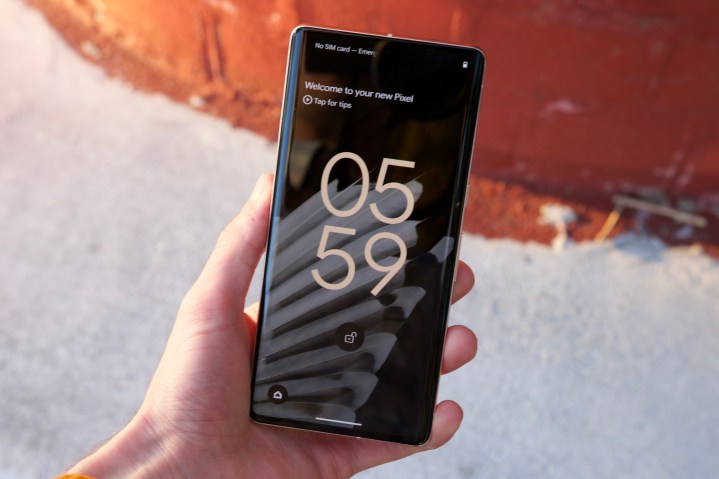
Battery life and charging speeds were fairly disappointing for the Pixel 7 series. Thankfully, Google appears to have upgraded these two things for the Pixel 8. Per a report from Android Authority, the Pixel 8 and Pixel 8 Pro will get battery life and charging improvements across the board — though to varying degrees.
The regular Pixel 8 is reported to have a 4,485mAh battery, and the Pixel 8 Pro should have a 4,950mAh battery. That’s an increase of 215mAh for the Pixel 8 compared to the Pixel 7, though the Pixel 8 Pro’s battery is just 24mAh larger than the one in the Pixel 7 Pro.
Charging speeds are also expected to be faster. The report claims we’ll get 24W wired charging for the Pixel 8, plus 27W wired charging for the Pixel 8 Pro — an increase of 4W compared to the 20W and 23W charging offered by the Pixel 7 and Pixel 7 Pro, respectively.
These aren’t huge changes, but regardless, it’s nice to see Google moving in the right direction here. Yogesh Brar (@heyitsyogesh on Twitter) seems to confirm the battery size and charging speed for the Pixel 8 Pro in his latest tweet.
Google Pixel 8 and Pixel 8 Pro: release date

Going by the history of Google’s Pixel releases, we should have the Google Pixel 8 and Pixel 8 Pro by the fall of 2023 — probably around September or October.
The Pixel 7 was announced on October 6, 2022, and was officially available to purchase a week later on October 13. Judging by that and other Pixel releases over the years, a fall release for the Pixel 8 is all but guaranteed.
Don’t expect the Pixel 8 range to be launching alone — recent rumors suggest the Pixel Watch 2 will be making an appearance at the same time and may well launch with the Pixel 8 and Pixel 8 Pro.
Yogesh Brar tweeted that the Pixel 8 Pro (and regular Pixel 8, supposedly) will launch in October.
Google Pixel 8 and Pixel 8 Pro: price

We don’t have any solid confirmation of how much the Pixel 8 and Pixel 8 Pro will cost. But if we take a look at the Pixel 7, it starts at $599, and the Pixel 7 Pro starts at $899, so it’s fair to assume the Pixel 8 and Pixel 8 Pro will have similar price points.
One of the strengths of the Pixel devices is their affordable prices compared to other flagships, like the Samsung Galaxy S23 and Apple’s iPhone 14, with both starting at $799 for the base models. Current market conditions could result in a price hike for the Pixel 8 lineup, but we’re hopeful Google can keep the current prices for another year.
What we want to see in the Pixel 8
Fix Google Tensor’s teething problems

So here’s a suggestion: skimp on the processing power upgrade this time around. That sounds crazy, but be honest for a moment and think about the last time you used a flagship phone that felt slow. A fresh flagship from several years ago will still offer great performance and enough processing power to handle every demanding game out there.
Heck, there are budget phones like the Nokia G60 5G that can handle advanced 3D rendering with ease; why spend valuable research and development time on pushing that power even further? It’s clearly not needed, whereas fixing the thermal problems is an absolute must. Best of all, while Google’s at it, it can further boost battery efficiency too.
Take the telephoto camera even further

Recent times (and the periscope zoom lens) have brought us some huge advances in optical zoom on smartphones. The Pixel 7 Pro has a 48-megapixel periscope telephoto lens with a 5x optical zoom, and it’s excellent. But there’s so much more Google could be doing here. The Samsung Galaxy S23 Ultra has brought startling improvements in smartphone zoom, and the key to this is the 10x periscope zoom lens. It’s high time Google added a 10x zoom to at least the Pro version of the Pixel 8.
It’s odd Google hasn’t added one already. It’s not as if it’s brand new tech Google hasn’t had the chance to study, as Samsung has been using a 10x optical zoom since March 2020. For some reason, most manufacturers are allowing Samsung free rein to rule over advances in smartphone zoom. The S23 Ultra took this to a new level, and, as the supposed smartphone photography king, it’s time Google started to catch up and really challenge Samsung.
This wouldn’t be as galling if Google didn’t already have such a strong background with zoom software. Samsung’s recent jumps center around processing the hybrid zoom at magnifications of 30x and 100x, and while still not perfect, it’s improving. Google was making huge strides in this area years ago with Super Res Zoom, and the company needs to take that to the next level. Boosting the camera array to a 10x zoom lens is the best way to begin that process.
Tighten up the software (aka fix the bugs)

For all its many strengths, the Google Pixel 7 (and Pixel 7 Pro) had one particularly strong flaw: software. Android 13 on the latest Pixel is unreliable and buggy, and Google really needs to get a handle on Android 14 for the next iteration of its flagship smartphone.
To be clear, the Pixel 7’s software isn’t bad; it’s just extremely unreliable. When it works, it works extremely well, and it looks fantastic to boot. But it’s just not a reliable experience — for example, Mobile Editor Joe Maring reported bugs and issues on his Pixel 7 Pro that Senior Mobile Writer Andy Boxall didn’t come across at all. Personally, I’ve come across a few bugs during my time with the phone, even if my experience has been broadly positive. The problem is it’s not consistent across devices, and there’s no way of knowing whether the Pixel 7 you buy will exhibit bugs and issues like Joe’s model, or be totally fine, like Andy’s.
This is especially important for Google to fix because the Pixel is supposed to be the Android showcase. Google owns and operates the Android operating system, and the Pixel is Google’s smartphone. Therefore, the Pixel should show Android at its very best. It should be the example we point people toward to prove why they should buy an Android smartphone. But it isn’t. It’s pretty far from it, in fact.
This needs to end with the Pixel 8. Google needs to get a firm grip on Android and use the new Pixel to show how very good Android can be. Give us a smooth, polished experience, and not just a platform for other manufacturers to build on and perfect.
Keep the same excellent value

While it’s made huge increases in sales numbers, it’s fair to say the Pixel doesn’t have the mass market recognition of Samsung’s Galaxy range, and certainly not that of Apple’s iPhone. Until it does, Google needs to keep offering the same value prospect it did with the Google Pixel 7. The Pixel 7 is our current pick for the best phone for value on our best smartphones list — thanks to its flagship processor, superb camera, good battery life, and a unique design that stands out.
We’re hoping the Pixel 8 will inherit the same price point as its predecessor, and really, it shouldn’t mean reducing the other improvements on this list. Of everything mentioned, only the telephoto lens will impact the price of the device, and that could be restricted to the more expensive Pro model anyway. So, there’s no real reason why Google can’t strive to keep the same strong value.
Give us something new to do with the Google Assistant
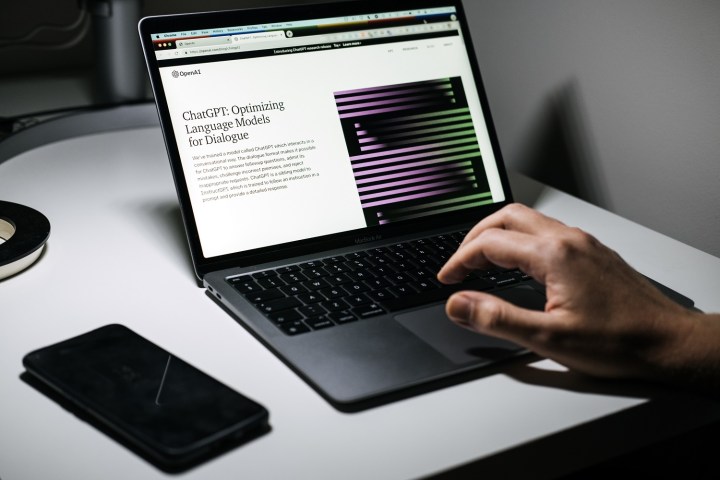
This is the last entry on this list, but it’s by no means at all the least important. In fact, this is probably the most important of the lot: give Google Assistant some new toys.
We’ve seen a lot of awesome new features added to Google Assistant over the years, from more basic conversational-style speech to the much more advanced call-screening and call-holding tools. But that’s all old hat now. We want something new, and we don’t just want it to be another basic Google Assistant feature. Not after what we’ve seen come to fruition in recent months.
I’ll be surprised if 2023 isn’t hailed as the “Year of ChatGPT“. AI tools have exploded onto the scene these last few months, from AI-powered art to chatbots that actually seem to be able to hold a conversation, understand nuance, and create pieces of content (and, in Bing’s case, want to be human). It’s a stunning, but scary revolution, and we all know Google is hot on the trail of ChatGPT with its own software, Bard.
Bring it to the Pixel 8. It likely won’t be finished, but heck, I really don’t care. The Pixel line has always been known for sporting Google’s strongest AI-powered features and spearheading Google’s research, so why stop now? Launch Bard on the Pixel 8, and give people a real reason to buy into the Pixel line. The hype around chatbots has been huge, so capitalize on it.
In all likelihood, Bard won’t be tied into the Google Assistant at launch. But even if it isn’t, it would be cool for the Pixel 8 to be the world’s first smartphone with a built-in AI chatbot, and it would be an amazing addition to a smartphone line that’s always prided itself on cutting-edge AI tech. If Google does nothing else on this list, it should do this.
Editors’ Recommendations
